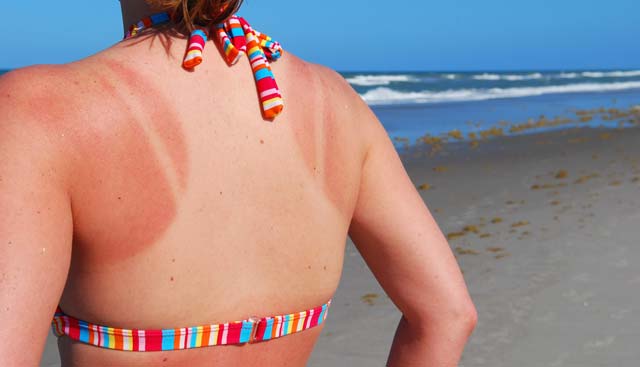
It’s UV Safety Month – Learn to Protect Yourself From Skin Cancer
Many people enjoy the warmth of the sun and the look of a suntan. Make no mistake about it, though: there is no such thing as a "healthy tan." Whether sun exposure turns your skin red, brown or golden, any change in color is a sign of ultraviolet (UV) light damage.
In fact, sun exposure causes many skin changes that are commonly associated with aging. For instance, UV exposure can permanently damage the elastin fibers that support the skin, which normally make it appear smooth, firm and tight. As these fibers break down, the skin will begin to stretch, sag and lose its ability to “spring back” into place. The skin will also tear and bruise more easily, and take longer to heal from injury. Oftentimes, these changes aren’t immediately obvious, but rather become more apparent slowly over time, along with the appearance of:
- Pre-cancerous skin lesions (actinic keratosis)
- Cancerous skin lesions (basal cell carcinoma, squamous cell carcinoma and melanoma)
- Fine skin lines
- Deep skin wrinkles
- Freckles
- Mottled pigmentation (areas of skin discoloration)
While nothing can completely reverse UV damage, the skin is sometimes able to repair itself to a certain extent. This means that it’s never too late to begin protecting yourself from skin cancer.
Here are some simple ways to help prevent skin cancer and other UV-related skin problems:
- Find a sunscreen that you like (because you will be more likely to use it) with a sun protection factor (SPF) of 15 to 30.
- At least 30 minutes prior to any sun exposure, liberally apply your sunscreen using broad, circular motions. Reapply it every two hours at minimum, and more often if you are swimming or sweating.
- For added protection, choose cosmetic products and contact lenses that have built-in UV protection, and wear them in addition to – not instead of – your sunscreen.
- When outdoors, protect your eyes by wearing sunglasses that block 99 to 100 percent of UVA and UVB rays.
- Cover up by wearing a wide-brimmed hat, a long-sleeved shirt and long pants.
- Avoid direct sun exposure during peak UV radiation hours (generally between 10 a.m. and 4 p.m.)
- Do not use indoor tanning devices, such as sunlamps, tanning beds and tanning booths.
- Gain familiarity with your skin by examining it regularly so that you will be more likely to notice any abnormal changes. Promptly bring any such changes to the attention of a medical professional.
- If you are a parent, be a good role model and help you children develop good skin cancer prevention habits (a whopping 80 percent of an individual’s lifetime sun exposure is acquired before the age of 18).
If you’d like to receive individualized guidance from a skin cancer expert at Moffitt Cancer Center, you can request an appointment by calling 1-888-663-3488 or completing a new patient registration form online. We do not require referrals.
